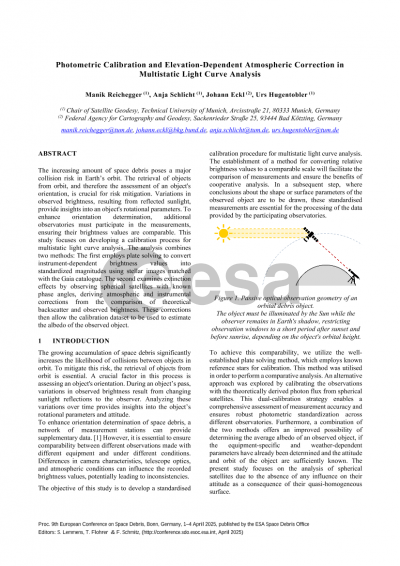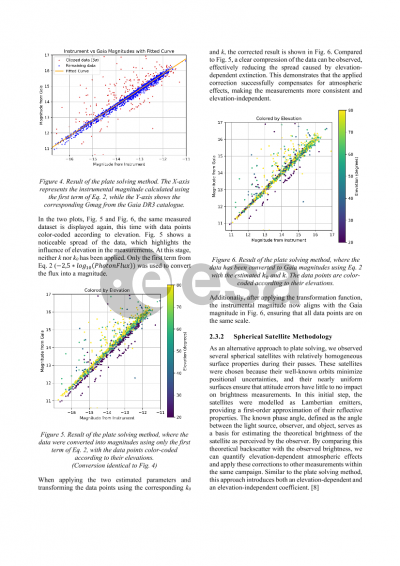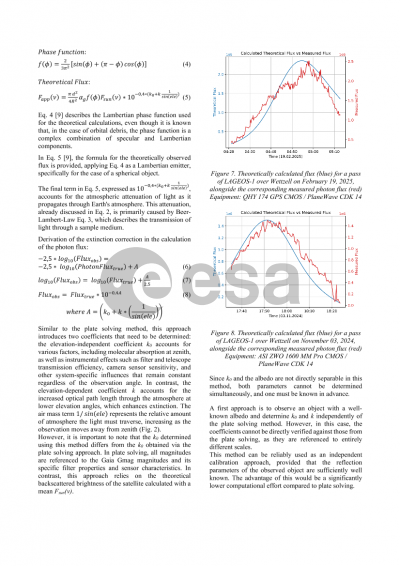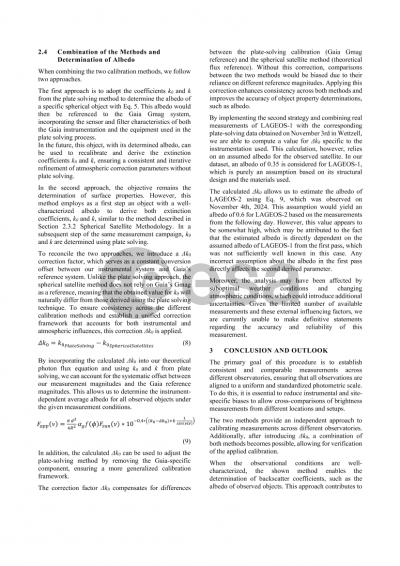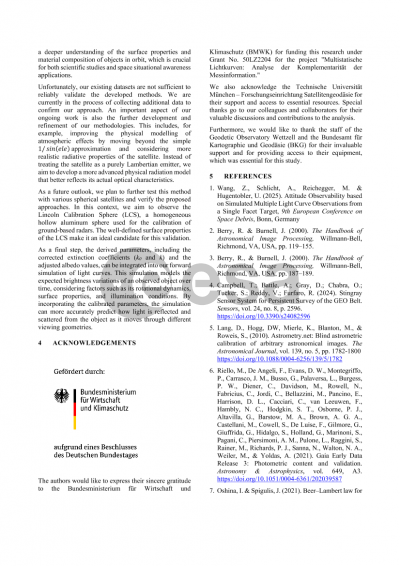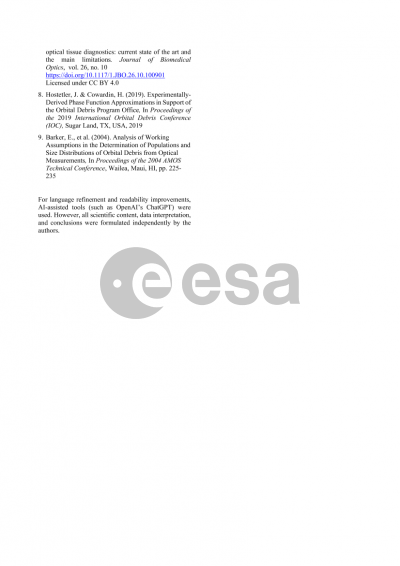Document details
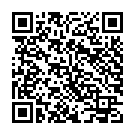
Abstract
The growing amount of space debris has significantly increased the risk of collisions between orbital objects. In order to mitigate this risk, it is essential to accurately determine their orbits. One key aspect of this process is the assessment of an object's orientation. During an object's pass, variations in observed brightness result from changes in reflected sunlight. These variations, observed over time, provide insight into the rotational parameters of the object. The optimal distribution of additional measurement stations can provide supplementary information that contributes to the determination of orientation. In order to allow a comparative analysis of the light curves of different observatories, it must be ensured that the relative brightness values recorded are comparable. The aim is to compare different calibration processes and to be carried out by the participating observatories in order to provide the most useful data for our multistatic light curve analysis.
One key aspect involves calibrating the instruments, including the telescope optics and camera sensor, to convert the recorded ADUs into an absolute, comparable magnitude scale. For this purpose, a calibration dataset of stellar images is created. These images are matched with the Gaia catalog using plate-solving techniques to define the corresponding magnitudes. The resulting conversion factors enable the transformation of instrument-dependent relative brightness values into standardized magnitudes.
In addition to instrumental calibration, it is crucial to account for elevation dependent atmospheric influences. A second phase of the study involved observing several spherical satellites with relatively homogeneous surfaces during their passes. The known phase angle, defined as the angle between the light source and the observer, provides a basis for estimating the theoretical brightness of the object as perceived by the observer. By comparing this theoretical backscatter with the observed brightness, we can infer the elevation-dependent atmospheric effects and incorporate these corrections into the analysis of other measurements in the same campaign.
These theoretical backscatter intensities are influenced by the surface properties of the observed object, which are often inadequately characterized, especially after extended time in orbit. To analyze, quantify, and correct for the elevation dependence without relying on detailed knowledge of the satellite's surface properties, we focus on calculating the relative flux based solely on the phase angle, which allows us to determine a relative elevation-dependent effect by comparing the theoretical percentage brightness with the observed changes in brightness over time.
Furthermore, the conversion factors derived from the calibration dataset can be employed to estimate albedo values for absolute brightness determination, provided that a maximum magnitude for the observed spherical satellite is available. Given the well-known orbits of these satellites, the distance to the observer is well established, thereby enabling a reasonably precise calculation of the incoming photon flux. This approach enhances the precision of albedo estimates and contributes to more accurate photometric analyses of the satellite's reflectivity.
In order to establish a basis for these multistatic observations of space debris, it is essential to define an absolute scale for the backscattered sunlight. In this context, a series of test observations were made using a diverse range of analytical techniques to guarantee and validate the absolute calibration of space debris lightcurve observations.
Preview
